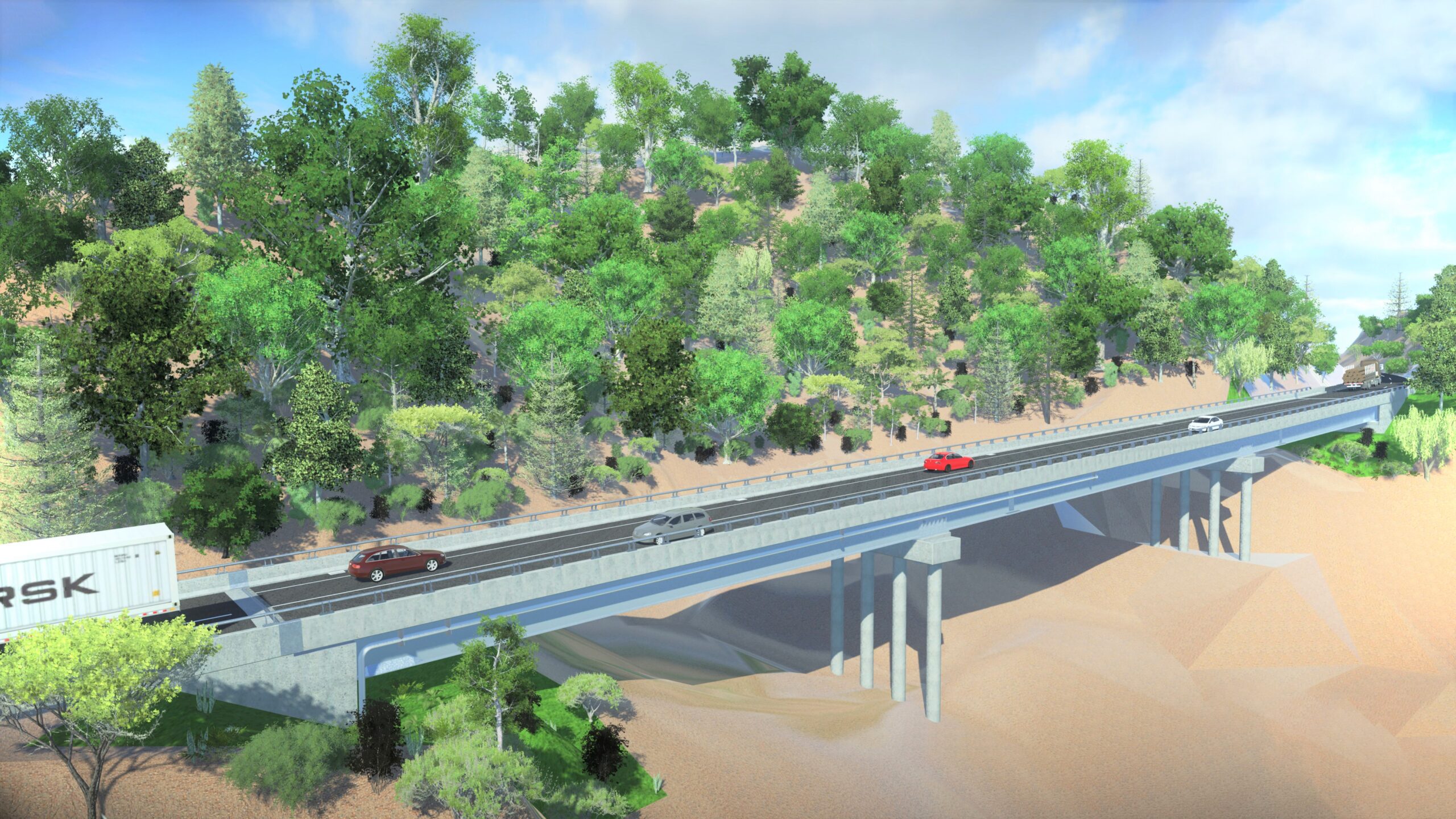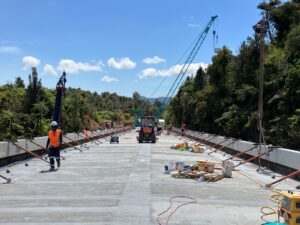The cost of the new bridge to reconnect the Coromandel Peninsula has already increased $10 million since May.
On a visit to the site on August 18, transport minister Hon David Parker said he was advised that the project would be delivered “on budget” at $50m.
But just three months ago, it was estimated that the bridge would cost between $30-$40m.
He wasn’t aware as to why the costs had increased, but said Waka Kotahi New Zealand Transport Agency was “pulling out all the stops” to get the bridge constructed “as soon as possible”.
He said people were working at the Kōpū-Hikuai slip site roughly 20 hours a day, while off-site construction was operating 24/7.
“Everyone’s doing their utmost to bring it in early, but they’re promising it’ll be [built] by March.”

A bridge was confirmed as the best option to fix SH25a back in May – as opposed to a bypass or a rebuild – based on its ability to reconnect Coromandel’s communities quickly and resiliently.
Hugh Milliken, project director for successful tenderers McConnell Dowell and Fulton Hogan, said the work being undertaken at the slip site was “fairly straightforward”.
“We are trying to keep this as simple as we can. We are literally stabilising the ground and sorting the water out. That’s water from the sky, water across the hill, and water from the hill – getting that captured so we’ve got control of it.
“This really is a preparation site,” he said. “As quickly as we can, we want to turn this into an assembly project, so that when the bridge arrives, we will assemble it, that’s the goal, and we’re only probably a few weeks away from that.”
Thames-Coromandel Mayor Len Salt said to see the project in its current stage was “really good for our communities”.
“We’re looking forward to getting this done and open again,” he said. “It’s been tough on so many levels… We just appreciate the fact that we’ve got things moving and the support is there. There’s this sense of a light at the end of the tunnel,” he said, “or, light at the end of the bridge.”
Earlier this month, contractors were able to install the seismic casings at the eastern abutment of the new 124-metre bridge. The pipes surround three piles near the surface and provide space for them to move in an earthquake.
The recent drier conditions also saw good progress on work to stabilise and drain the slip-face. The transport agency said a specialist crew had begun installing the 250 soil nails that would be driven into the slip face to stabilise it.
BY KELLEY TANTAU





